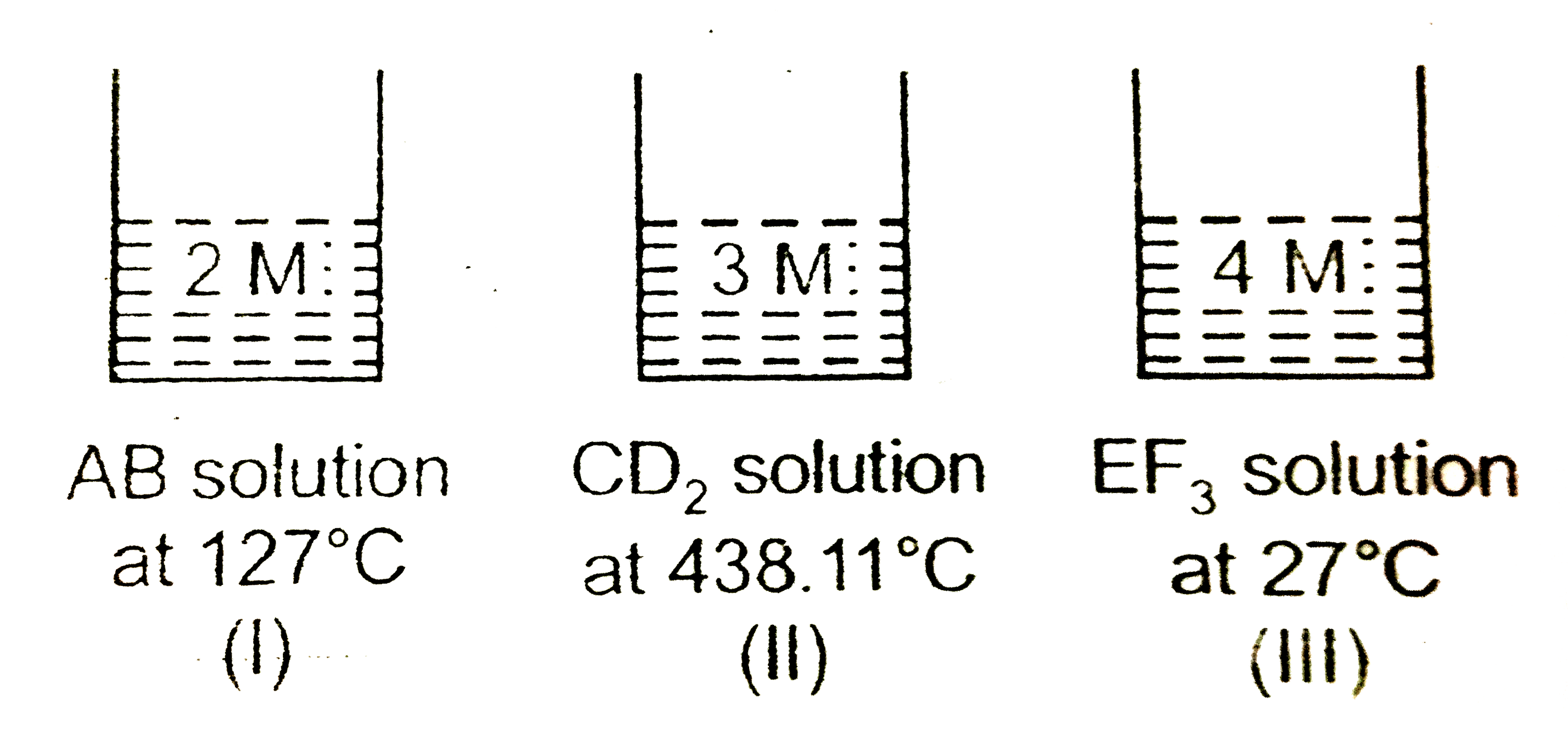One of the most important techniques of counting is the principle of exclusion and inclusion. Let A1,A2….Am be m sets and n(Ai) represents the cordinality of the set A, (the number of elements in the set Ai), then according to the principle of exclusion and inclusion. m∑i=1n(Ai)−∑i≠jn(Ai∩Aj)+∑i≠j≠kn(Ai∩Aj∩Ak)−.....+(−1)nn(A1∩A2∩....∩Am).
In particular , if A,B,C are three sets, then
n(A∩B∩C)=n(A)+n(B)+n(C)−n(A∩B)−n(B∩C)−n(C∩A)+n(A∩B∩C).
Principle of exclusion and inclusion must be applied whenever there is a chance of repeated counting of some of the samples.
The number of numbers from 1 to 100, which are neither divisible by 3 nor by 5 nor by 7 is .
67
55
45
33
The correct Answer is:C
Topper's Solved these Questions
- BOOK - FIITJEECHAPTER - PROBABILITYEXERCISE - Match the Column6videos
PROBABILITY
- BOOK - FIITJEECHAPTER - PROBABILITYEXERCISE - Numerical Based3videos
PROBABILITY
- BOOK - FIITJEECHAPTER - PROBABILITYEXERCISE - Comprehension-I6videos
PROBABILITY
- BOOK - FIITJEECHAPTER - PERMUTATIONS & COMBINATIONSEXERCISE - NUMERICAL BASED3videos
PERMUTATIONS & COMBINATIONS
- BOOK - FIITJEECHAPTER - PROGRESSION & SERIES EXERCISE - NUMERICAL BASED3videos
PROGRESSION & SERIES
Similar Questions
One of the most important techniques of counting is the principle of exlcusion and inclusion. Let A1,A2,……………,Am be m sets and n(A1) represents the cardinality of the set A1 (the number of elements in the set A1) then according to the principle of exlusion and inclusion.
n(A1∪A2∪.........∪Am)
=m∑i=1n(A1)−∑i=jn(Ai∩Aj)+∑i<j<kn(Ai∩Aj∩Ak)−...........+(−1)m+1n(A1∩A2∩........∩Am)
In particular if A,B,C are three sets, then
n(A∪B∪C)=n(A)+n(B)+n(C)−n(A∩B)−n(B∩C)−n(C∩A)+n(A∩B∩C).
Principle of exclusion and inclusion must be applied whenever there is a chance of repeated counting of some of the samples.
The number of numbers from 1 to 100, whcih are neither divisible by 3 nor by 5 nor by 7 is67View Solutionif n∑i=1ai=0, where |ai|=1,∀i then the value of ∑1<i<j<n∑aiaj
View Solution
Knowledge Check
- Question 1 - Select One
One of the most important techniques of counting is the principle of exclusion and inclusion. Let A1,A2….Am be m sets and n(Ai) represents the cordinality of the set A, (the number of elements in the set Ai), then according to the principle of exclusion and inclusion. m∑i=1n(Ai)−∑i≠jn(Ai∩Aj)+∑i≠j≠kn(Ai∩Aj∩Ak)−.....+(−1)nn(A1∩A2∩....∩Am).
In particular , if A,B,C are three sets, then
n(A∩B∩C)=n(A)+n(B)+n(C)−n(A∩B)−n(B∩C)−n(C∩A)+n(A∩B∩C).
Principle of exclusion and inclusion must be applied whenever there is a chance of repeated counting of some of the samples.
The number of natural numbers less than or equal to 2985984, which are neither perfect squares nor perfect cubes is.A2984124B2984244C2959595Dnone of these - Question 2 - Select One
One of the most important techniques of counting is the principle of exclusion and inclusion. Let A1,A2….Am be m sets and n(Ai) represents the cordinality of the set A, (the number of elements in the set Ai), then according to the principle of exclusion and inclusion. m∑i=1n(Ai)−∑i≠jn(Ai∩Aj)+∑i≠j≠kn(Ai∩Aj∩Ak)−.....+(−1)nn(A1∩A2∩....∩Am).
In particular , if A,B,C are three sets, then
n(A∩B∩C)=n(A)+n(B)+n(C)−n(A∩B)−n(B∩C)−n(C∩A)+n(A∩B∩C).
Principle of exclusion and inclusion must be applied whenever there is a chance of repeated counting of some of the samples.
On a particular day, six persons -pick six-different books, one each, from different counters at a public library. At the closing time , they arbitrarily put their books, to the vacant counters. The probability that exactly two books are at their previous places is .A13B115C34D316. - Question 3 - Select One
One of the most important techniques of counting is the principle of exlcusion and inclusion. Let A1,A2,……………,Am be m sets and n(A1) represents the cardinality of the set A1 (the number of elements in the set A1)) then according to the principle of exlusion and inclusion.
n(A1∪A2∪.........∪Am)
=m∑i=1n(A1)−∑i=jn(Ai∩Aj)+∑i<j<kn(Ai∩Aj∩Ak)−...........+(−1)m+1n(A1∩A2∩........∩Am)
In particular if A,B,C are three sets, then
n(A∪B∪C)=n(A)+n(B)+n(C)−n(A∩B)−n(B∩C)−n(C∩A)+n(A∩B∩C).
Principle of exclusion and inclusion must be applied whenever there is a chance of repeated counting of some of the samples.
The number of natural numbers less than or equal to 2985984, which are neither perfect squares nor perfect cubes isA2984124B2984244C2959595DNone of these
If ai>0 (i=1,2,3,….n) prove that
∑1≤i≤j≤n√aiaj≤n−12(a1+a2+….+an)View SolutionIf ai>0(i=1,2,3n), prove that √aiaj∑1≤i<j≤n≤n−12(a1+a2++an)
View SolutionLet A = { 1, 2, 3, …….n} , if ai is the minimum element of the set A, (where A , denotes the subset of A containingexactly three elements) and X denotes the set of Ai's , then evalute ∑Ai∈Xa
View SolutionConsider three solutions of 3 strong electrolytes.AB, CD2 and EF3

The osmotic pressure ratio of I,II, and III isView SolutionOne of the most important techniques of counting is the principle of exlcusion and inclusion. Let A1,A2,……………,Am be m sets and n(A1) represents the cardinality of the set A1 (the number of elements in the set A1)) then according to the principle of exlusion and inclusion.
n(A1∪A2∪.........∪Am)
=m∑i=1n(A1)−∑i=jn(Ai∩Aj)+∑i<j<kn(Ai∩Aj∩Ak)−...........+(−1)m+1n(A1∩A2∩........∩Am)
In particular if A,B,C are three sets, then
n(A∪B∪C)=n(A)+n(B)+n(C)−n(A∩B)−n(B∩C)−n(C∩A)+n(A∩B∩C).
Principle of exclusion and inclusion must be applied whenever there is a chance of repeated counting of some of the samples.
A six letters word is formed using the letters of the wrod ALMIGHTY with or without repetition. The number of words that contain exactly three different letters isView Solution

